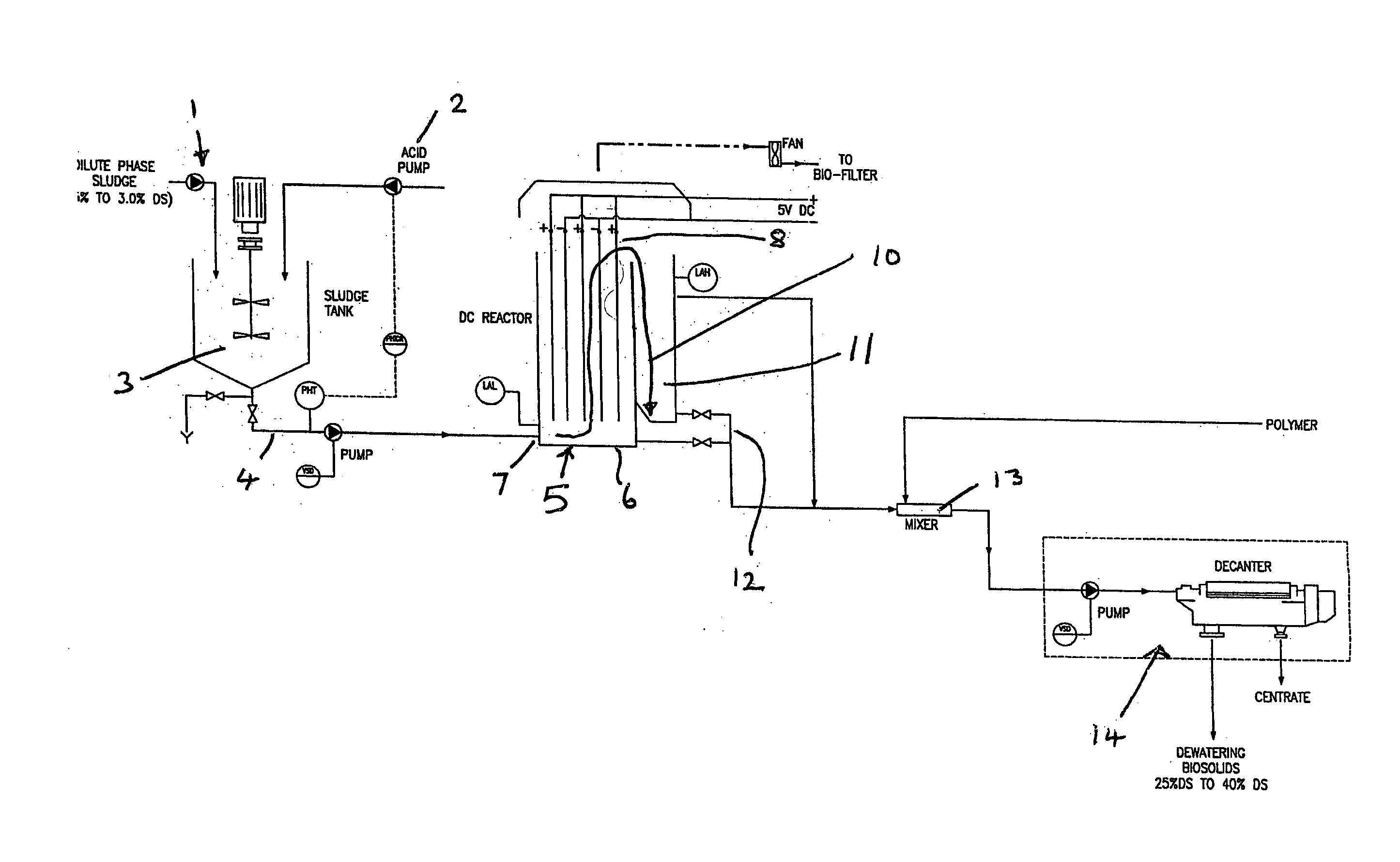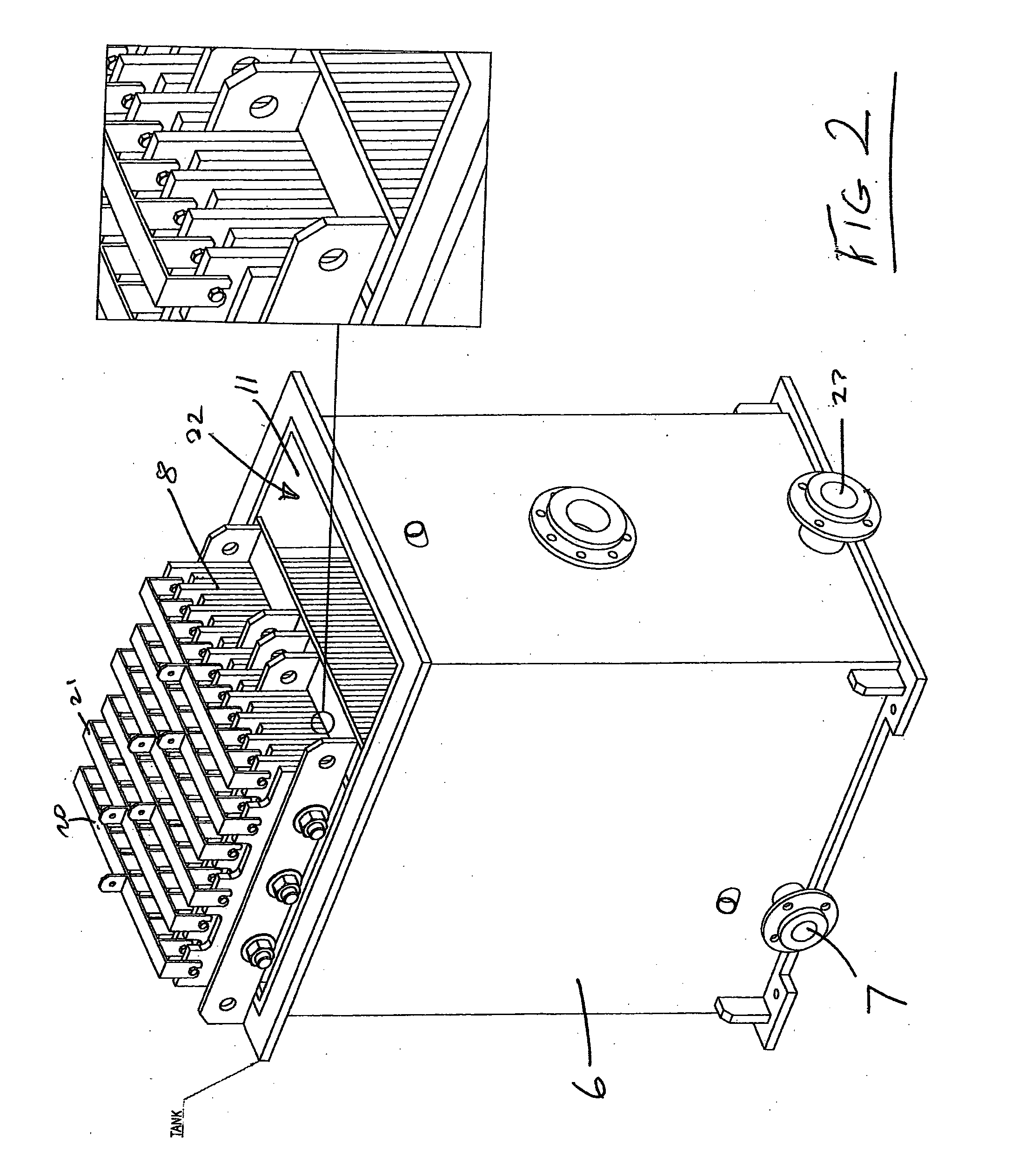Improvements in/or relating to a method of treating sludges
a technology of sludge and belt, which is applied in the direction of liquefaction, solidification, light and heating apparatus, etc., can solve the problems of high specialised belts and power requirements
- Summary
- Abstract
- Description
- Claims
- Application Information
AI Technical Summary
Benefits of technology
Problems solved by technology
Method used
Image
Examples
Embodiment Construction
[0035]Referring to drawings dilute phase sludge typically 0.5 to 4% more particularly 2 to 3% dry solids is provided at 1 and mixed with acid provided from an acid pump 2. Typically the acid is sulphuric acid or hydrochloric acid. The sludge and acid is mixed in a mixer 3 and when thoroughly mixed is taken through outlet pipe 4 to reactor 5. A typical flow rate of the dilute phase sludge is from about 10 to about 100 m3 / h.
[0036]The reactor 5 applies a DC field across the sludge. The reactor 5 may comprise a holding vessel 6 with an inlet 7 towards to the bottom of the vessel 6. The vessel has therein a series of plates 8 across which the DC field is applied. In the example there are ten positive plates and ten negative plates. The gap between the plates is preferably from about 10 mm to about 30 mm. We have found about a gap of 15 mm gives good results.
[0037]Referring now to FIG. 2 the inlet 7 feeds to the interior of holding vessel 6 in which plates 8 are positioned. Positive and n...
PUM
| Property | Measurement | Unit |
|---|---|---|
| voltage | aaaaa | aaaaa |
| voltage | aaaaa | aaaaa |
| voltage | aaaaa | aaaaa |
Abstract
Description
Claims
Application Information
 Login to View More
Login to View More - R&D
- Intellectual Property
- Life Sciences
- Materials
- Tech Scout
- Unparalleled Data Quality
- Higher Quality Content
- 60% Fewer Hallucinations
Browse by: Latest US Patents, China's latest patents, Technical Efficacy Thesaurus, Application Domain, Technology Topic, Popular Technical Reports.
© 2025 PatSnap. All rights reserved.Legal|Privacy policy|Modern Slavery Act Transparency Statement|Sitemap|About US| Contact US: help@patsnap.com



